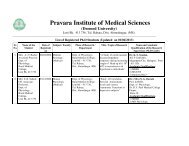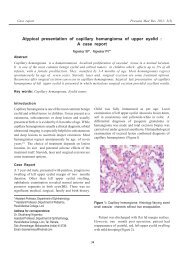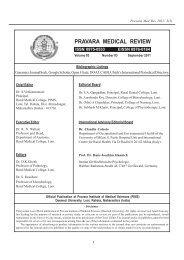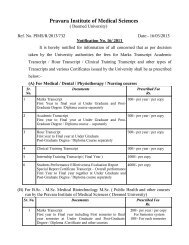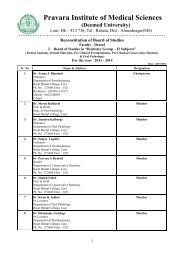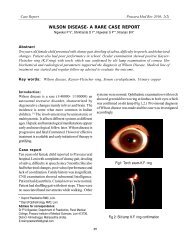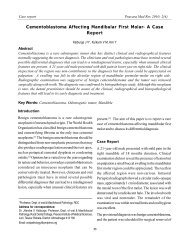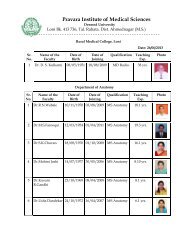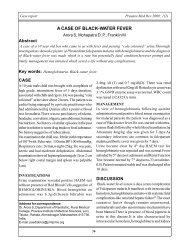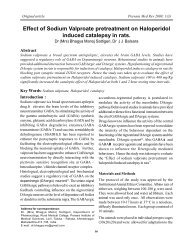ABSTRACT SECTION - Pravara Institute of Medical Sciences
ABSTRACT SECTION - Pravara Institute of Medical Sciences
ABSTRACT SECTION - Pravara Institute of Medical Sciences
Create successful ePaper yourself
Turn your PDF publications into a flip-book with our unique Google optimized e-Paper software.
Abstract section <strong>Pravara</strong> Med Rev 2009; 1(4)<br />
depth <strong>of</strong> target volume was measured in both the<br />
original and boost plans. Age, body mass index (BMI),<br />
boost electron energy, and skin reaction were<br />
evaluated.<br />
Results<br />
Resimulation in the lateral decubitus position reduced<br />
the distance from skin to maximal target volume depth<br />
in all patients. Average depth reduction by repositioning<br />
was 2.12 cm, allowing for an average electron energy<br />
reduction <strong>of</strong> approximately 7 MeV. Mean skin entrance<br />
dose was reduced from about 90% to about 85% (p<br />
< 0.001). Only 14 patients (6%) experienced moist<br />
desquamation in the boost field at the end <strong>of</strong> treatment.<br />
Average BMI <strong>of</strong> these patients was 30.4 (range, 17.8–<br />
50.7). BMI greater than 30 was associated with more<br />
depth reduction by repositioning and increased risk <strong>of</strong><br />
moist desquamation.<br />
Conclusions<br />
The lateral decubitus position allows for a decrease in<br />
the distance from the skin to the target volume depth,<br />
improving electron coverage <strong>of</strong> the tumor bed while<br />
reducing skin entrance dose. This is a well-tolerated<br />
regimen for a patient population with a high BMI or<br />
deep tumor location.<br />
34



